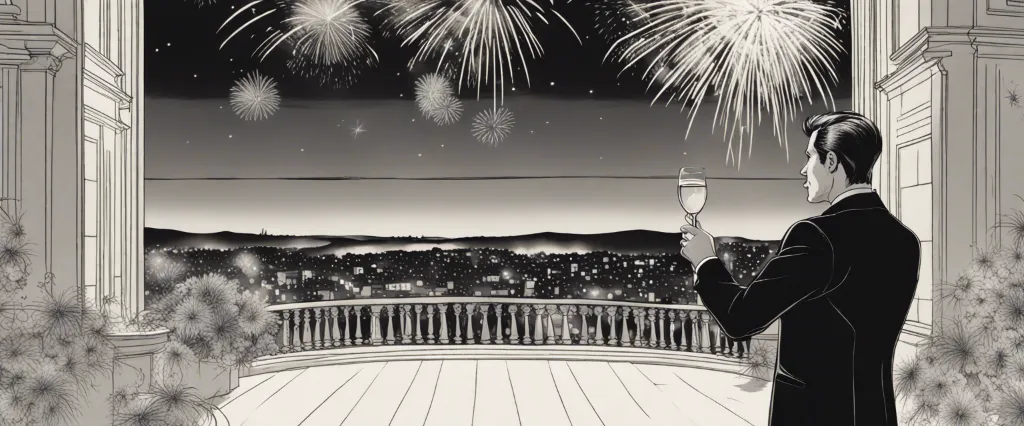——The Great Gatsby by Francis Scott Fitzgerald & The Old Man And The Sea by Ernest Hemingway

In the vast world of literature, certain works have stood the test of time, leaving an indelible mark on the minds of readers. Two such remarkable novels, The Great Gatsby by Francis Scott Fitzgerald and “The Old Man and the Sea” by Ernest Hemingway, present contrasting yet captivating narratives, each with their own distinct themes and characters. While Fitzgerald’s opulent portrayal of the Jazz Age explores the elusive nature of the American Dream, Hemingway’s poignant novella delves into the profound resilience and endurance of the human spirit. Although separated by time and setting, both novels offer profound insights into the human condition, inviting readers to ponder the complexities of existence and the boundaries of human ambition. This comparative study seeks to dissect and analyze the intricate layers of these renowned works, shedding light on the contrasting literary techniques, thematic explorations, and character developments employed by Fitzgerald and Hemingway. Through this analysis, we endeavor to unveil how these distinguished authors manipulate language, structure, and symbolism to convey their distinct visions, ultimately leaving an indelible impact on their readers.
Brief Summary of Two Books
The Great Gatsby by Francis Scott Fitzgerald
The Great Gatsby” by F. Scott Fitzgerald is a classic American novel published in 1925. Set in the 1920s, the story follows Jay Gatsby, a self-made millionaire known for throwing lavish parties at his mansion in West Egg on Long Island. The narrator, Nick Carraway, moves to the area and becomes Gatsby’s neighbor. Through Nick’s eyes, the novel explores themes of love, wealth, social class, and the American Dream.
The story revolves around Gatsby’s obsessive love for Daisy Buchanan, who is now married to Tom Buchanan, a member of the old-money aristocracy. Gatsby and Daisy had a brief romantic relationship years ago, and Gatsby has spent the years since amassing wealth to win her back. He throws parties in the hope that Daisy, who lives across the bay in East Egg, will attend one and see him.
As Nick becomes more involved in Gatsby’s world, he learns about Gatsby’s mysterious past and how he earned his wealth through illegal means. Daisy and Gatsby reconnect, and Gatsby believes he can recreate their past and convince Daisy to leave Tom. However, the affair is exposed during a confrontational gathering at the Buchanan’s house, and tragedy ensues.
“The Great Gatsby” explores the emptiness and decadence of the Jazz Age, where material possessions and social status dominate. It delves into the disillusionment of the American Dream, suggesting that no matter how much wealth or success one achieves, true happiness and fulfillment may remain elusive. Fitzgerald’s prose captures the decadence and allure of the era while subtly critiquing the moral decay and emptiness that lie beneath the surface.
Ultimately, “The Great Gatsby” is a tragic love story that serves as a reflection on the American Dream and the corrupting influence of materialism and social aspirations in 1920s America.
The Old Man And The Sea by Ernest Hemingway
The Old Man and the Sea” is a novella by Ernest Hemingway published in 1952. Set in Cuba, the story follows an old fisherman named Santiago, who hasn’t caught a fish in 84 days. Santiago’s luck changes when he goes on an adventurous fishing expedition and battles a massive marlin. Despite his physical exhaustion, Santiago refuses to give up, displaying immense courage and determination. As the battle continues, the old man forms a bond with the marlin. However, Santiago’s struggles are not over, as he faces numerous obstacles including sharks trying to steal his catch. Through Santiago’s perseverance and unwavering strength, Hemingway explores themes of resilience, existentialism, and the symbolism of the struggle. Ultimately, the novella reflects the triumph of the human spirit and the ability to find purpose in the face of adversity.
Comparison between Two Books

Similarities in American Literature
Both The Great Gatsby by F. Scott Fitzgerald and The Old Man and the Sea by Ernest Hemingway share several similarities as iconic examples of American literature. These two novels capture key aspects of American society, explore themes such as the pursuit of the American Dream, and reflect the disillusionment and loneliness experienced by their characters.
Firstly, both novels provide insightful commentary on American society during different time periods. The Great Gatsby is set in the 1920s, a period known as the Roaring Twenties, characterized by economic prosperity and lavish lifestyles. Fitzgerald portrays the excesses of the Jazz Age, highlighting the materialism, moral decay, and social stratification of the time. Similarly, The Old Man and the Sea, published in 1952, presents a post-World War II America grappling with the consequences of war and the changing values of a society embracing modernity. Both novels capture the essence of their respective eras, offering a critique of the underlying issues within American society.
Another common theme in these works is the exploration of the American Dream. In The Great Gatsby, Jay Gatsby personifies the embodiment of the American Dream – the rags-to-riches success story. Gatsby’s relentless pursuit of wealth and social status represents the aspirations of many Americans during the 1920s. Likewise, The Old Man and the Sea presents Santiago, an aging fisherman, who desires to prove his worth and regain his former glory. Hemingway uses the struggle of Santiago against the marlin as a metaphor for the pursuit of one’s dreams, emphasizing the determination and persistence required to achieve them. Both novels shed light on the fragility and often elusive nature of the American Dream, questioning its ultimate fulfillment.
Furthermore, both Fitzgerald and Hemingway depict their characters as isolated and lonely individuals. In The Great Gatsby, characters like Gatsby and Nick Carraway experience a sense of isolation amidst the grandeur and superficiality of the Jazz Age. Despite the glamorous parties and social gatherings, these characters still find themselves disconnected from genuine human connections. Similarly, The Old Man and the Sea explores the solitude of Santiago’s life, emphasizing the emotional and physical isolation he endures during his fishing expedition. These portrayals reflect the struggles of individuals within American society to establish true and meaningful relationships amidst the challenges of their respective times.
In conclusion, The Great Gatsby by F. Scott Fitzgerald and The Old Man and the Sea by Ernest Hemingway share commonalities in the context of American literature. Both novels effectively capture the essence of American society, explore the complexities of the American Dream, and delve into the themes of disillusionment and loneliness. Through their compelling narratives and insightful commentary, these timeless works continue to resonate with readers as quintessential examples of American literature.
Divergences in American Literature
The Great Gatsby by Francis Scott Fitzgerald and The Old Man and the Sea by Ernest Hemingway are two iconic works in American literature that showcase distinct styles and themes while simultaneously reflecting the divergence in the literary landscape of the time.
Firstly, one notable divergence between the two novels lies in their narrative structure and tone. The Great Gatsby is a novel marked by lyrical prose, intricate symbolism, and a deep exploration of the Jazz Age society. Fitzgerald’s writing immerses the reader in a whirlwind of glamour, excess, and disillusionment, painting a vivid picture of the Roaring Twenties through the eyes of Jay Gatsby and his pursuit of the American Dream.
In contrast, The Old Man and the Sea displays Hemingway’s minimalist and direct approach to storytelling. The novella follows the journey of an elderly Cuban fisherman, Santiago, as he grapples with nature, struggle, and the inevitability of human mortality. Hemingway’s writing style is characterized by short, declarative sentences that convey emotional depth with a sense of restraint, mirroring the stoicism and resilience portrayed by the protagonist.
Another significant divergence is observed in the thematic exploration of these novels. The Great Gatsby delves into themes of love, desire, social class, and the corrupting influence of wealth. Fitzgerald dissects the longing for a utopian society amidst the reality of an American Dream tainted by materialism, superficiality, and moral decay. Through the character of Gatsby, the novel reflects the disillusionment felt by many in the post-World War I era.
On the other hand, The Old Man and the Sea centers on themes of perseverance, determination, and the struggle against adversity. Hemingway explores the human condition through Santiago’s solitary battle with a colossal marlin, casting him as a symbol of human fortitude and resilience. The novella presents a more introspective examination of the individual’s struggle against forces beyond their control, highlighting the idea of finding meaning in the face of existential challenges.
In terms of their impact on American literature, both novels contributed to the divergence of the literary landscape during their respective time periods. The Great Gatsby, published in 1925, stands as a quintessential work of the Jazz Age, capturing the spirit and turmoil of the 1920s with its intricate portrayal of characters and societal critique. Fitzgerald’s exploration of the American Dream in the context of a changing society paved the way for future literary critiques of the nation’s values and aspirations.
Similarly, The Old Man and the Sea, published in 1952, challenged prevailing literary trends of the time, such as complex and densely layered narratives. Hemingway’s minimalistic style challenged conventional storytelling and encouraged a more nuanced understanding of human struggle and resilience. The novella, through its timeless themes and enduring popularity, played a significant role in shaping the direction of American literature and the rejuvenation of Hemingway’s own literary career.
In summary, The Great Gatsby and The Old Man and the Sea diverge in terms of their narrative structure, tones, and themes. While The Great Gatsby encapsulates the disillusionment and moral decay of the Jazz Age, The Old Man and the Sea explores the human condition and resilience in the face of adversity. Both works have greatly impacted American literature, reflecting the evolving literary landscape of their respective eras and shaping the course of future literary endeavors.

Conclusion
Both The Great Gatsby by F. Scott Fitzgerald and The Old Man and the Sea by Ernest Hemingway are considered classics and are worth reading for different reasons. The choice ultimately depends on personal preference and individual interests.
The Great Gatsby is a novel that explores themes of the American Dream, wealth, and the illusion of happiness. Fitzgerald’s writing style is poetic and vivid, and he captures the decadent and glamorous atmosphere of the Jazz Age. The characters in this book are complex and embody the flawed and materialistic nature of society during the 1920s.
On the other hand, The Old Man and the Sea is a novella that tells the story of an old fisherman’s struggle against nature and his own self-doubt. Hemingway’s writing style is sparse and concise, reflecting his iceberg theory of writing. It is a tale of endurance, determination, and the significance of one’s personal journey.
Both books have garnered critical acclaim and have had a significant impact on literature. The Great Gatsby is often studied for its commentary on the American Dream and the disillusionment of the 1920s, while The Old Man and the Sea is recognized for its existential themes and exploration of the human condition.
Ultimately, both books offer unique and thought-provoking perspectives on life, but the choice between them is subjective and depends on personal interests.



